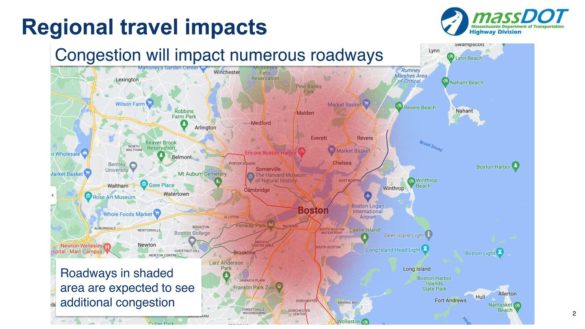Sermon — August 14, 2022
The Rev. Greg Johnston
Lectionary Readings
These are hard readings, this week: verse after verse of judgment, suffering, division, and despair. They seem to be starting out with something nice— “Let me sing for my beloved my love-song!” (Isaiah 5:1)—but things quickly take a turn. Oh, I’ll sing a love song, all right, Isaiah says, about a vineyard. “I will remove its hedge!… I will break down its wall!” It shall be “devoured” and “trampled down!” “It shall not be pruned or hoed,” it will not receive a drop of rain, “I will make it a waste,” and “it shall be overgrown.” (Isaiah 5:1-7) Not quite romantic.
Then Hebrews reminds us of the stories of the great heroes of the Old Testament, of the judges and kings and prophets who led their people to freedom and to victory—and of the martyrs who were “stoned to death, sawn in two… killed by the sword…” who were “destitute, persecuted, tormented,” who were driven from their homes and lived in holes in the ground. (Hebrews 11:32-38) And this encomium to faith is more than a little intimidating. Would any of us really be willing to do the same?
But thankfully, as we do everything Sunday, we finally get to the Gospel reading, and Jesus always has something nice to say. Right? “I came to bring fire to the earth, and how I wish it were already kindled! … Do you think I came to bring peace to the earth? No, I tell you, but division! … Three against two and two against three… father against son and son against father, mother against daughter and daughter against mother… You hypocrites! Why do you not know how to interpret the present time?” (Luke 12:49-53, 56)
Just in case you didn’t get enough strife and division in the newspaper from Monday to Saturday: here’s an extra Sunday-morning dose. Of course, a part of me secretly relishes this kind of thing, because we are divided—in our nation, in our communities, in our families—and I know, as we all do, that my side is right, and it’s those people who disagree with me who are hypocrites. Right? And to be perfectly honest there’s just a little part of me that’s glad that the lectionary puts all these readings in mid-August, and not on “Welcome Back Sunday!”
Today’s lessons make for grim reading. But I want to suggest to you at least one way of making sense of them as “good news,” as a reassuring word from God to the people of God, because each of these readings comes out of the anguish of a bedraggled and discouraged minority, desperately trying to hold onto hope in a world that seems to be burning down all around them. So let’s start from the beginning.
The prophet Isaiah lived in the city of Jerusalem in the 8th century BC, in the shadow of the Assyrian Empire. The Assyrians were a mighty and merciless power. Isaiah would watch them conquer and destroy the northern kingdom of Israel, scattering ten of the twelve tribes of the Israelites into exile. He would see them come for Jerusalem, nearly destroying that city, too, and they nearly did, in a siege that only ended with what the Israelites saw as a miraculous divine intervention. This was a terrifying thing; conquest wouldn’t have been a casual change of government, but would likely end in death or enslavement for most of the population. But it was a religious crisis as well. The Israelites were God’s chosen people. Wasn’t their God strong enough to protect them?
Isaiah’s prophecy subtly shifts the blame. It’s not that God is too weak to protect the city, it’s that the people have created a social order that’s so unjust, so unequal, that God just might allow it to be destroyed. He closes with a cutting Hebrew pun: “God expected mishpat and found mishpach; he expected tzedakah, and found tze‘aqah.” God expected that the people whom he had led into freedom would build a city based on his divine law of love, and he found bloodshed instead. God imagined they would practice tzedakah, charity—and he found tze‘aqah, outcry.
It’s not Isaiah’s prophecy that’s grim and scary. His people’s actual lives are scary. And you may or may not like his theology, but Isaiah offers hope: the hope that if they change their ways, if they reorganize their society, if they practice law and charity instead of cruelty and outrage, God will return to the people she loves and tend their vineyard again.
The Book of Hebrews comes from a similar place. We don’t know much about the author of the letter—he or she never names or places herself—but we do know that the early Christians were a persecuted and misunderstood group. In good times, they could hope to be treated like most of us would treat door-to-door proselytizers: strange people with strange ideas who you kind of want to avoid in polite society. In bad times, the simple statement “I am a Christian” could be punishable by death. Hebrews looks to the great heroes and the great martyrs of the Bible, and blends them together as exemplars of faith. It makes no distinction between the kings and prophets who achieve great success, and the ordinary men and women who suffer and die in failure. And this is grim, and it’s depressing, but it’s comforting, too, in its way. Hebrews reminds these early Christians that, with all due respect to Isaiah, their suffering is not a sign that God has rejected them. It’s not a sign of divine punishment. It is, in fact, what Jesus himself had endured, like generations of faithful people before him and generations since. And more than that: Jesus’ own failure and death were the means of his ultimate triumph and our ultimate redemption, because it was Jesus, the “pioneer and perfecter” of our faith, who had “endured the cross, disregarding its shame,” and through his own death had destroyed the power of death.
And so we come to Jesus’ words in Luke, dividing households and families and nations against themselves. For what it’s worth, we know that Jesus’ own family were less-than-enthusiastic about his ministry, at times. (Luke 8:19-21) And we know that his movement did in fact divide families. Some whole households would convert, to be fair, and join the Jesus movement. But it was much more common for one or two members to become Christians, and we have ancient stories about the breaks this could cause with parents and siblings and the retribution angry fathers could take. Now, that’s very different from our own, modern Christianity, in which so many people are born into Christian families or even Christian nations, where a kind of casual cultural Christianity is taken for granted. But there’s some similarity, too; there’s comfort and hope for us in Jesus’ hard words, because they mean that the early Christians weren’t letting Jesus down when their churches struggled to grow, when the people around them didn’t just accept their message and join in. Jesus knew that what he was trying to do wouldn’t be popular, he knew it would cause division and conflict, and he did it anyway, because it was the right thing to do.
We live in very different times. And yet they’re not so different, in some ways. Our families are often divided—sometimes even by religion! Our churches, in this country, are not persecuted, but they are struggling. Our city is not besieged by a mighty army, but sometimes it does feel like the world is falling apart. And if you look around, it’s easy to find bloodshed where there should be justice; a cry, where there should be righteousness.
Isaiah, and Hebrews, and Jesus found hope in the midst of it, in their very different ways.
So where do you find hope?
I can’t speak for anyone else. But for me, there’s something comforting about Hebrews’ idea of the “great cloud of witnesses” who surround us. Human beings have been on this earth for ten thousand generations or more. There is no joy and no sorrow we can experience that has not happened before, and there are ancestors and friends, visible and invisible, bearing witness to our lives, all around us. And in Jesus, our very God suffered, and wept too. Wherever we are, whatever happens to us, it has happened before, and God loves each one of us still. God is faithful to us, even when our faith begins to fail, and is leading the way for us through all the turmoil of life into a better future for this world.
So then, “since we are surrounded by so great a cloud of witnesses, let us also lay aside every weight, and the sin that clings so closely, and let us run with perseverance the race that is set before us, looking to Jesus the pioneer and perfecter of our faith, who for the sake of the joy that was set before him endured the cross, disregarding its shame, and has taken his seat at the right hand of the throne of God.” Amen.


